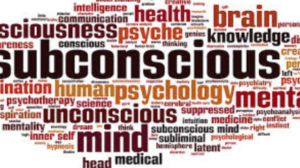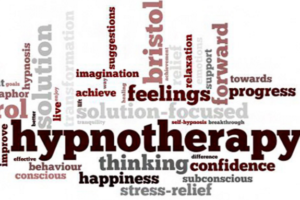
Introduction:
Hypnotherapy, a powerful and often misunderstood therapeutic technique, has been gaining recognition for its efficacy in addressing many common problems such as stress, fear, smoking, obesity, pain, IBS, insomnia, and substance abuse. This article delves into this fascinating modality, unraveling its mysteries and shedding light on its profound impact on the human mind.
The Basics of Hypnotherapy:
At its core, hypnotherapy involves inducing a state of deep physical relaxation, focused attention along with heightened suggestibility. Contrary to common misconceptions, it is not a form of mind control, but rather a collaborative process between practitioner and the client. A hypnotherapist guides the client into a more receptive level of thought and then offers positive suggestions supporting healthy change.
Understanding the Hypnotic Trance:
Think of hypnotherapy as goal-oriented meditation. With simple direction and creative scenarios clients are comfortably guided into a deep daydream state, which is something we all routinely experience in the form of ‘zoning out’ or becoming momentarily ‘lost in our thoughts’. Another example is the phenomenon referred to as ‘highway hypnosis’ when, on long drives, we can slide into that daydream state and reach our destination with no clear memory of the journey.
These are common, everyday examples of when the subconscious mind is more open and active. It’s also important to understand that we as humans can shift from one level of awareness to another. Hypnosis is a language tool enabling this therapeutic transition.
Benefit of Accessing Subconscious Thought:
This is why hypnotherapy is such a powerful tool. Think of the subconscious as the hard drive; the home of all habits, memories, emotions, values and beliefs that shape the routine patterns of our daily lives. If we routinely repeat any pattern of action, thought, or emotion, and its repeated long enough, it becomes rooted in the subconscious mind for better or worse.
In life, it’s all about our routine pattern of thought, how we think and what we most routinely think about that dictates our life experience; how we feel, how we appear, and how we respond to the world around us.
It’s also important to know that the subconscious doesn’t care if the pattern is good or bad; healthy or not. It also doesn’t matter what we intellectually or consciously may prefer. Once problem patterns are rooted, they can feel automatic. Smokers know that smoking is a potentially  deadly habit, and they are also certainly aware of the cost. Along with the addictive qualities of nicotine, the repetitive, ritualistic pattern of smoking reinforces the habit to continue, despite what we might consciously prefer.
deadly habit, and they are also certainly aware of the cost. Along with the addictive qualities of nicotine, the repetitive, ritualistic pattern of smoking reinforces the habit to continue, despite what we might consciously prefer.
Another example of a pattern problem is dieting. There is a good reason why there are dozens of diets to choose from, dieting doesn’t work. Slick, manipulative advertising promises rapid results often involving extreme restrictions or unsustainable practices, leading to short-term weight loss followed by rebound weight gain when normal eating resumes. UCLA posted this study: in less than two years, 23% of dieters gained back more weight than they lost. In more than two years that percentage rose to 83%.
The dieting concept implies a temporary, conscious level change with eating habit patterns which reside on a much deeper, subconscious, level. It’s not a pound problem, it’s a pattern problem. Dieting is like weeding your garden by only clipping them off at the ground level. It looks great for a while, but the problem always returns.
For lasting results, it’s crucial to adopt a more permanent and balanced lifestyle, focusing on nourishing the body rather than just restricting calories. Desperate overweight individuals continue searching for an answer that is not readily available.
With hypnotherapy, we can create an emotional disconnect from the problem pattern and plant seeds supporting healthy change. Clients then take the same approach to establish sustainable relief as they previously took to secure the problem, repetition.
My clients have easy access to mp3 recordings of their sessions via Dropbox and listen daily for a minimum of 3 months. Without repetition the office session is like a massage; it feels good in the moment but it’s always back to business as usual.
A great longevity study confirmed that 71% of patients with irritable bowel syndrome, who listened daily to home recordings of IBS specific hypnosis sessions for 3 months were still symptom-free after 5 years. (Gonsalkorale WM 2003)
hypnosis sessions for 3 months were still symptom-free after 5 years. (Gonsalkorale WM 2003)
Just follow the feeling. The advantage hypnotherapy has over other options is that it feels wonderful. When that feel-good connection is made on the initial visit, clients never see listening to home sessions as a chore.
Applications of Hypnotherapy:
Hypnotherapy has proven to be effective in treating a wide range of conditions. These include, but are not limited to:
- Anxiety and Stress Management: Hypnotherapy helps individuals achieve deep relaxation, alleviating anxiety and stress by reprogramming negative thought patterns.
- Smoking Cessation: By targeting the subconscious mind’s associations with smoking, hypnotherapy aids in breaking the habit and promoting a smoke-free lifestyle.
- Weight Loss: Addressing the root causes of unhealthy eating habits, hypnotherapy supports individuals in adopting positive behaviors for sustainable weight loss.
- Pain Management: Chronic pain sufferers can benefit from hypnotherapy as it helps modulate the perception of pain and promotes relaxation, reducing reliance on medication.
- Phobias and Fears: Hypnotherapy assists in uncovering the origins of phobias and fears, facilitating their resolution through targeted suggestions.
- Substance abuse: Hypnotherapy can initiate a sense of euphoria which clients can enjoy daily. With repetition, this new experience can become a preferred alternative to drugs and/or alcohol.
The Therapeutic Process:
In my practice, the initial visit involves a discussion of the client’s goals and concerns, followed by a review of how/why hypnotherapy can help. Then I teach clients how to listen to a session properly, and what to experience in terms of physical sensations such as warmth, tingling, weightlessness or feeling peacefully heavy.
I also review the potential of unique visual imagery such as colors or unexpected imaginative scenarios and how personal experiences with hypnotherapy can vary from day to day. It’s best to allow each session to be uniquely right for you that moment in time.
Prior to conducting the hypnotherapy session, I also teach my clients how to do self-hypnosis. This is a simple technique that empowers individuals to access meditative relaxation on their own which only takes about 10 minutes.
 With self-hypnosis the client is in a light meditative trance which makes it so easy to then transition into the hypnotherapy session. Most clients have no previous experience with hypnotherapy and this approach makes it so much easier for anyone to get into the flow of the process on the first visit.
With self-hypnosis the client is in a light meditative trance which makes it so easy to then transition into the hypnotherapy session. Most clients have no previous experience with hypnotherapy and this approach makes it so much easier for anyone to get into the flow of the process on the first visit.
Once the session begins, I help clients into deeper mediative relaxation and then guide them through creative scenarios supporting specific goals. This is very much a collaborative process where clients are actively participating in their own healthy transformation.
Ethical Considerations:
This empowering modality is rapidly becoming more widely embraced thanks in part to the many meditation apps readily available to anyone searching for healthy relief. However, there is still a long way to go.
At the time of this writing there are thirty states offering specific standards of practice for hypnotherapy [more]. Fifteen states defer to the guidelines presented by the National Guild of Hypnotists and the remaining states currently have no formal recommendations.
Conclusion:
Hypnotherapy, once relegated to the realm of mysticism, is now experiencing growing recognition as a legitimate and effective therapeutic modality. As our understanding of the mind continues to evolve, hypnotherapy stands as a beacon of hope for those seeking positive and lasting changes in their lives. The key lies in unlocking the potential of the subconscious mind, harnessing its power for personal transformation and self-healing.
by: Paul Gustafson RN CH

 Despite robust evidence for myriad ailments and sound mechanistic data, hypnosis is underused by internists. Using hypnosis fulfills our pledge to abide by evidence-based treatments that alleviate suffering with the least collateral harm, but there is a discrepancy between its benefits and physicians who offer the treatment.
Despite robust evidence for myriad ailments and sound mechanistic data, hypnosis is underused by internists. Using hypnosis fulfills our pledge to abide by evidence-based treatments that alleviate suffering with the least collateral harm, but there is a discrepancy between its benefits and physicians who offer the treatment.
Although hypnosis may appear in the medical curricula at academic powerhouses like Baylor, Harvard, Columbia, and Stanford, hypnosis training is rare even at these institutions. Here is why a modern resurrection of the oldest Western form of psychotherapy should inspire internists to get trained and offer medical hypnosis broadly.
Hypnosis, and its myths and misconceptions, have evolved since the 18th century when Franz Mesmer inadvertently led hypnosis into obscurity with his theory about manipulating a force called “animal magnetism.” These claims were dispelled by the French Royal Academy of Sciences, and it took nearly 100 years for Scottish physician James Braid to first describe a mental and suggestive theory of hypnosis as a waking physiologic state.
The 2014 definition from the American Psychological Association’s Division 30 describes hypnosis as “a state of consciousness involving focused attention and reduced peripheral awareness characterized by an enhanced capacity for response to suggestion.”
Long-standing empirical evidence demonstrates that hypnosis impacts perception, symptoms, and habits, which have recently been explained by advanced diagnostic modalities like functional magnetic resonance imaging (fMRI). Changes during hypnosis include reduced activity in the dorsal portion of the anterior cingulate cortex (a key component of the salience network) and connectivity between the prefrontal cortex and the insula (a pathway for mind-body control).
Augmented by data on neurotransmitter metabolism and genetics, the neurophysiologic basis of hypnosis is no longer mysterious. Though our understanding of the mechanism of action of hypnosis is more robust than that of even acetaminophen, this has not sufficed to enhance its use.
Skeptics describe hypnosis in 1 of 3 ways: dangerous mind control, an ineffective farce, or placebo. It is often viewed as a loss of control and, therefore, dangerous, when in fact it is a powerful means of teaching patients how to control mind and body. The ability to enter into hypnosis, termed hypnotizability, is a stable trait possessed by most people, which can be entered into or terminated by the patient.
is a powerful means of teaching patients how to control mind and body. The ability to enter into hypnosis, termed hypnotizability, is a stable trait possessed by most people, which can be entered into or terminated by the patient.
It is not effective in the presence of conditions such as stroke or schizophrenia or impaired focused attention or language processing. Hypnosis is more powerful than placebo (though patient expectancy is a moderating factor), and placebo effect is blocked by administration of naloxone, while the hypnotic analgesia is not.
Reviews on hypnosis for internal medicine topics are impressive, with demonstrated efficacy for migraine headache,4 irritable bowel syndrome,5 and anxiety.6 Hypnosis improves procedural pain and emotional distress and reduces medication consumption up to 40%7—in short, if hypnosis were a drug, it would be standard of care. Internists should prescribe hypnosis particularly when it outperforms the current standard of care by safety and efficacy, as in the case of opioids and sedatives.
Patients have a strong appetite for taking charge of their symptoms; online hypnosis videos for anxiety and insomnia boast 15-19 million views, and medical hypnosis is quite acceptable by patients.8 But patients cannot be expected to differentiate between legitimate and manipulative sources of hypnosis online any more than if they bought pills off the street. This treatment modality falls under the purview of medicine, and our duty is to provide safe access. To do this, we must improve the supply.
Formal training for medical providers is offered through national societies, such as the American Society of Clinical Hypnosis (ASCH) and Society for Clinical and Experimental Hypnosis (SCEH). Trainings span 4 days and include ethics and informed consent in addition to practical skills. Hospital credentialing for the privilege of hypnosis may be required: If none exists, designing one to include formal training and mentorship requirement is advised. For institutional trailblazers, individuals in the hypnosis societies can provide mentorship.
Hypnosis training includes tools for helping our patients to help themselves, which benefits all our patients even outside a formal session. Telling a patient: “Don’t think about purple elephants” will assure that they do. Through the lens of hypnosis, one appreciates that even the common phrase “How bad is your pain” is fraught with negative associations.
With all their capacity to trust their physician, patients internalize “You have bad pain.” Contrast this with the phrase, “How comfortable are you right now?” The patient scans their body for comfort rather than pain and, if discomfort is reported, can be followed up with the 0-10 scale. These subtle adjustments acknowledge comfort without the disservice of anticipatory suffering. This is the healing art of medicine.
 Additionally, the trained physician can practice self-hypnosis for stress management, insomnia, or performance anxiety, thereby avoiding medications that blunt their focus. Our patients, colleagues, trainees, and families stand to benefit.
Additionally, the trained physician can practice self-hypnosis for stress management, insomnia, or performance anxiety, thereby avoiding medications that blunt their focus. Our patients, colleagues, trainees, and families stand to benefit.
Hypnosis research is funded by the National Center for Complementary and Integrative Health (NCCIH), and researchers are making inroads into the genetic aspects of hypnotizability and response to treatment and studying hypnosis for pain management for cancer and surgery, smoking cessation, and stress management in health care.
The automation of hypnosis using recordings, web-based applications, and smart-speaker devices is being tested to expand access to hypnosis interventions. From basic science to clinical efficacy to medical education, hypnosis research of all kinds has relevance for internal medicine.
Internists are the ambassadors of evidence. Our broad training and scope maximizes our effectiveness as healers, but we mustn’t lose sight of that which experiences illness: the human mind. When the technique of hypnosis is properly illuminated, its role will be welcomed and respected by our patients.
They will benefit from less pain, anxiety, insomnia, habits such as smoking, and the side effects that accompany many pharmacological treatments. We will benefit from the satisfaction of reacting nimbly to the best evidence for safer treatments and, perhaps, also enjoy a better night’s sleep. This is a call to action for broader use of hypnosis with intrepid internists leading the charge.
by: Jessie Kittle, MD and David Spiegel, MD
Code of Ethics and Standards of Practice
National Guild of Hypnotists
Client Welfare: Members shall make the physical and mental well-being of each client a prime consideration.
Client Safety: Members shall not engage in verbal, physical or sexual abuse of any client.
Practice Limits: Members shall use hypnotism strictly within the limits of their training and competence and in conformity to the laws of their state.
Advertising: Members shall be truthful in their advertising.
Referred Practice: Members shall engage in hypnotic work with a client regarding a medical or mental disease only on written referral from an appropriately licensed medical or mental health professional, except when otherwise provided for by state law.
Reasonable Practice: Members shall withhold non-referred hypnotic services if a client’s behavior, appearance or statements would lead a reasonable person to believe that the client should be evaluated by a licensed health care professional. Members shall provide services to such clients only after evaluation and with the approval of the licensed health care professional.
Colleagues: Members shall treat hypnotist colleagues without public defamation.
Record Keeping: Members shall establish and maintain proper records necessary to a professional practice.
Scope of Practice: Members shall use hypnotism with clients to motivate them to eliminate negative or unwanted habits, facilitate the learning process, improve memory and concentration, develop self-confidence, eliminate stage fright, improve athletic abilities, and for other social, educational and cultural endeavors of a non-medical nature. Except where state law provides otherwise, members shall use hypnotism with clients regarding a medical or mental disease only on written referral from a licensed medical or mental health professional.
Titles of Practice: Members shall hold their hypnotism services out to the public using only those titles earned and approved by the National Guild of Hypnotists: Certified Hypnotist or Certified Hypnotherapist Certified Instructor, Board Certified Hypnotist or Board Certified Hypnotherapist, Fellow of the National Guild of Hypnotists, or Diplomate of the National Guild of Hypnotists, or titles protected by state law.
Disclosure: Members shall truthfully disclose in writing to each client, using a Client Bill of Rights or similar written document, the nature and venue of the member’s hypnotism training, the field of study of any higher degree used when holding services out to the public, the lawful limits of the member’s practice of hypnotism, the practitioner’s theoretical orientation or model, instructions for contacting the National Guild of Hypnotists should the client seek redress, and any business policies and practices maintained by the practitioner. Members holding advanced degrees from institutions that do not hold accreditation recognized by the United States Department of Education shall disclose to clients that the degree is alternative rather than academic. Members shall restrict the services described on this document to hypnotism.
Terminology: Unless qualified to do so by another credential, members shall avoid using the language of psychopathology or medicine when working with clients, except on referral from a licensed medical or mental health professional.
Public Hypnotism: Demonstrational hypnotism shall always be presented in a tasteful manner which is considerate of the individuals who have volunteered to participate in a public demonstration. Individuals participating in such demonstrations shall be treated with courtesy and respect.
Age-regression and Forensic Hypnotism: Age-regression and forensic hypnotism shall be used only by those who have had additional training in these specific fields of study.
Imagery: Frightening, shocking, obscene, inappropriately sexually suggestive, degrading or humiliating imagery shall never be used with a hypnotized client.
Claims: Members shall not disseminate false or exaggerated claims regarding hypnotism, but shall attempt whenever possible to inform and educate the public with a true perspective of hypnotism. Members shall make only those specific claims for the effectiveness of hypnotism as can be justified by outcomes data. Members shall publicly maintain a professional demeanor toward other professions expressing divergent views on hypnotism.
Advertising: All advertising shall be factually presented in a professional and ethical way consistent with accepted standards. Members shall advertise services and capabilities as hypnotists in conjunction with other specialties, occupations, vocations, arts or professions only if duly trained, properly qualified and professionally recognized in those fields.
Education: Schools of instruction now existing and those to be established in the future shall provide a full curriculum consisting of the theory, practice and applications of hypnotism, instruction and supervised practice in hypnotic methodology, the possibilities and limitations of hypnotism, with thorough instruction on the Ethics and Standards of our profession as set forth herein. All curricula used at schools recognized by the National Guild of Hypnotists shall be approved by the National Guild of Hypnotists. Instructors at such schools are expected to be approved and certified by the National Guild of Hypnotists or to hold credentials judged by the Guild as equivalent.
Good Standing: Members who maintain the required number of continuing-education hours, are of high moral character, conduct themselves and their practice of hypnotism in a professional and ethical manner and meet their financial dues obligation shall be considered as members in good standing of the National Guild of Hypnotists.
Recommendations: When a member recommends a client consult a colleague or health care professional, the member shall, whenever possible, provide the client with a list of more than one recommended


 deadly habit, and they are also certainly aware of the cost. Along with the addictive qualities of nicotine, the repetitive, ritualistic pattern of smoking reinforces the habit to continue, despite what we might consciously prefer.
deadly habit, and they are also certainly aware of the cost. Along with the addictive qualities of nicotine, the repetitive, ritualistic pattern of smoking reinforces the habit to continue, despite what we might consciously prefer. hypnosis sessions for 3 months were still symptom-free after 5 years. (Gonsalkorale WM 2003)
hypnosis sessions for 3 months were still symptom-free after 5 years. (Gonsalkorale WM 2003) With self-hypnosis the client is in a light meditative trance which makes it so easy to then transition into the hypnotherapy session. Most clients have no previous experience with hypnotherapy and this approach makes it so much easier for anyone to get into the flow of the process on the first visit.
With self-hypnosis the client is in a light meditative trance which makes it so easy to then transition into the hypnotherapy session. Most clients have no previous experience with hypnotherapy and this approach makes it so much easier for anyone to get into the flow of the process on the first visit.
 Despite robust evidence for myriad ailments and sound mechanistic data, hypnosis is underused by internists. Using hypnosis fulfills our pledge to abide by evidence-based treatments that alleviate suffering with the least collateral harm, but there is a discrepancy between its benefits and physicians who offer the treatment.
Despite robust evidence for myriad ailments and sound mechanistic data, hypnosis is underused by internists. Using hypnosis fulfills our pledge to abide by evidence-based treatments that alleviate suffering with the least collateral harm, but there is a discrepancy between its benefits and physicians who offer the treatment. is a powerful means of teaching patients how to control mind and body. The ability to enter into hypnosis, termed hypnotizability, is a stable trait possessed by most people, which can be entered into or terminated by the patient.
is a powerful means of teaching patients how to control mind and body. The ability to enter into hypnosis, termed hypnotizability, is a stable trait possessed by most people, which can be entered into or terminated by the patient. Additionally, the trained physician can practice self-hypnosis for stress management, insomnia, or performance anxiety, thereby avoiding medications that blunt their focus. Our patients, colleagues, trainees, and families stand to benefit.
Additionally, the trained physician can practice self-hypnosis for stress management, insomnia, or performance anxiety, thereby avoiding medications that blunt their focus. Our patients, colleagues, trainees, and families stand to benefit.







